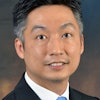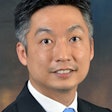




On a daily basis, most people don't give much thought to the ethnic diversity of their workplace. But in an increasingly multicultural workforce, a person's background can be an integral part of the way he or she works.
For example, a foreign-born radiologist may resist using a voice recognition system because she's self-conscious about a prominent accent. Another physician, coming from a culture that is more accepting of death, may be perceived as taking a less aggressive approach toward a terminally ill patient.
Medical workplace demographics 
While there are no specific statistics for radiologists, the number of foreign-born and foreign-trained doctors is significant: According to the American Medical Association, international medical graduates (IMGs) make up one-fourth of all U.S. physicians. In 1998, 7,000, or 26%, of the first-year residents in the U.S. were IMGs. Yet information is sparse on the dynamics of a multicultural medical workplace. According to a 1998 survey of multicultural awareness among healthcare professionals at the University of Wisconsin Hospitals and Clinics inMadison, nearly half of the 872 respondents said they needed more information aboutcommunicating in a diverse environment (6% of the respondents were radiologists or radiologic technologists).
Such results don't surprise Ruth Davidhizar,dean of the nursing school at Bethel College in Mishawaka, IN. Davidhizar co-authored "Managing a multicultural radiology staff," along with radiologic technologist StevenDowd, an associate professor in the radiologic sciences division at the University of Alabama in Birmingham (Radiology Management 1997 Jan-Feb; volume 19:1, pp. 50-55).
"Much of the literature in healthcare management lacks practical guidelines for managinga diverse workforce. Space, spatial behavior, and cultural attitudes influence people'sbehavior. This is a particularly important consideration for a radiology staff, which must often work in close quarters," the authors wrote.
Workplace diversity 
The differences that workers in a multicultural environment see can range from punctuality to personality. The issue of time, for instance, can be the source of some tension, Davidhizar said.
"Say you have a staff member that is habitually late, but they don't seem to think of it as inappropriate," she said. "In many cultures, everything is on social time. Someone may be on a break, get carried away in a conversation, and not get back at the exact scheduled time. It's a question of social time versus clock time."
Other issues that can come up in a multicultural workplace are:
Space: Sometimes a desire to maintain distance can be misconstrued as territoriality, Davidhizar and Dowd said. In a radiology workplace, doctors or technologists may stake out certain areas that they consider "comfort zones," and become upset when others infringe on them.
Environmental control: A manager who needs to know about every move her staff makes has an internal locus of control, according to Davidhizar. Another person who tends to avoid delegating authority has an external locus of control. A cultural bias toward fate could influence a person's attitude toward their work. Social organization: For some cultures, the extended family is paramount and a work schedule may be re-arranged on short notice to accommodate a non-emergency situation. Western culture tends to put work before family, unless children are affected.
Gender-specific issues 
Gender issues can crop up, particularly in a radiology environment where expertise can vary according to title: doctors, technologists, nurses and administration. Problems arise when people begin to view the division of labor as a hierarchy, and associate gender with subordination.
"We see this more when you have doctors from one culture and nurses from another," Davidhizar explained. "The concept that women are submissive and cooperative is a major part of many cultures, but that's not an image that goes with today's very responsible (medical professional)."
Communicating through technology 
Another example of varying cultural communication skills can be seen when trying to implement new technology, such as voice-recognition software. In a presentation at the 1999 RSNA meeting, doctors from Massachusetts General Hospital in Boston cautioned that doctors with foreign accents may experience problems with systems that don't recognize their phrasing and intonation.
At MGH, the training sessions for using voice-recognition devices must accommodate a variety of accents, such as African, European, Asian and South American, said Sharon Antiles, coordinator of training and institutional design.
"Basically, the (voice-recognition) system will train itself and learn how that individual speaks. It will allow a user to type in a word and then record that individual's pronunciation of it," Antiles said. "It continually learns over time."
But there are glitches that even technology can't always overcome: If a person is unsure about his command of English, or tends to halt during speech because he is thinking in two different languages, it can throw the voice-recognition program off.
Resources
Several Web sites can help foreign-born professionals keep in touch with their countrymen, a nd help radiology departments stay on top of issues affecting IMGs. For general information, including legislative matters, try the American Medical Association International Medical Graduates Section.
A number of associations are devoted to particular ethnic groups, such as the American Association of Chinese Physicians - California;American Association of Physicians of Indian Origin;Association of American Indian Physicians;and the National Hispanic Medical Association.
Approaching multicultural issues head-on is the best way to avoid conflicts down the road. That task may fall to an administrator, department head or even an outside agency.
Educational diversity workshops and periodical refresher courses where staff members can discuss perceptions about their own culture and others are currently the most popular option, Davidhizar said. The Joint Commission on Accreditation of Healthcare Organizations offers guidelines fortraining staff in culturally competent care.
The main goal of any program should be to help workers avoid rushing to judgment about coworkers. "Our approach is that every healthcare professional should have an assessment model in their head where they are attuned to differences: Are they cultural differences or not?" Davidhizar said. "Instead of viewing anything odd as bad, it can be seen as a diversity issue with a history behind it."













